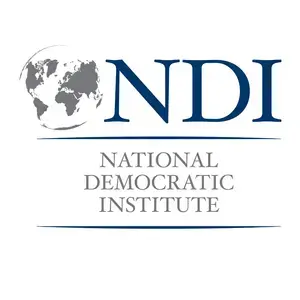For media inquiries, please contact Paulina Chavez [email protected].
Around the world, engagement between young people and political parties is increasingly low. While young people are interested in politics, they are less inclined to engage with or become members of formal political institutions. Bridging the divide between young people and political parties requires new strategies that recognize young people’s legitimate concerns about formal institutions and the different ways in which young people want to organize politically. It also requires that political parties better meet young people where they are. In 2019, NDI launched the Bridging the Divide program to better understand the trends and root causes of this occurrence and identified key recommendations for how to strengthen partnerships between young people and political parties.
Bridging The Divide: Strengthening Partnerships Between Young People and Political Parties
Throughout 2020 and 2021, NDI conducted a global review of youth political participation programs that included nonpartisan engagement with political parties. This report describes general trends in young people’s political participation through informal and formal avenues. It includes a series of abbreviated case studies on collaboration between young people and political parties from Chile, Ireland, Lebanon, Nigeria, North Macedonia, Spain, and Tunisia.
The report describes three approaches that resulted in meaningful consultation or collaboration between young people and political parties:
-
Youth-sensitive party platforms and communication styles: The Ireland and Spain case studies focus on political parties that actively involved young people and their views in shaping party platforms during the election cycle, including the benefits of youth-friendly communication mechanisms.
-
Cooperative and inclusive policymaking: The North Macedonia and Nigeria case studies focus on collaboration between young people, political parties, and other stakeholders to develop laws and policies. The Chile example focuses on the power of youth-driven protests and the consequences of excluding young people from the constitutional reform process.
-
Youth-led political party formation and candidacy: The Lebanon and Tunisia case studies focus on the efficacy of youth-led parties as an avenue to increase youth inclusion within the political party system and better engage young constituents.
Principles and Practices of Youth Engagement for Political Parties
In response to the growing divide between young people and political parties, NDI developed a tool for political parties on the best practices for effectively engaging young people. Through research and case studies drawn from examples of youth collaboration around the world, this resource includes charts, worksheets, and tools for political parties to better support young people’s political aspirations.
The tool consists of four key principles:
-
Connect: Connect with youth where they are. Political parties should engage in youth-friendly spaces, both physical and online, to understand what shapes their attitudes and perspectives on politics.
-
Build: Build internal structures that allow youth of diverse identities to play a meaningful role in the party. Support youth wings, include young people in decision-making processes, and place them in leadership positions.
-
Serve: Serve youth citizens through public policies and platforms that address their concerns, including them in developing a vision for democracy and the country.
-
Guide: Demonstrate that youth are more than just potential votes. Help young activists structure their activism and develop a political career plan that is asset-driven, helps maximize skills, and achieves goals.
View Downloads
- Bridging the Divide: Strengthening Partnerships Between Young People and Political Parties
- Bridging the Divide: Principles and Practices of Youth Engagement for Political Parties
- Bridging the Divide: Strengthening Partnerships Between Young People and Political Parties (Summary)
- Principes et pratiques de l’engagement des jeunes pour les partis politiques
- Combler le Fossé entre les jeunes et les partis politiques (résumé)
- Principios y prácticas de participación de la juventud en los partidos políticos
- Acortemos la brecha: La juventud y los partidos políticos (resumen)
- ردم الهوة بين الشباب والأحزاب السياسية
- مبادئ وممارسات الأحزاب السياسية في مجال إشراك الشباب





